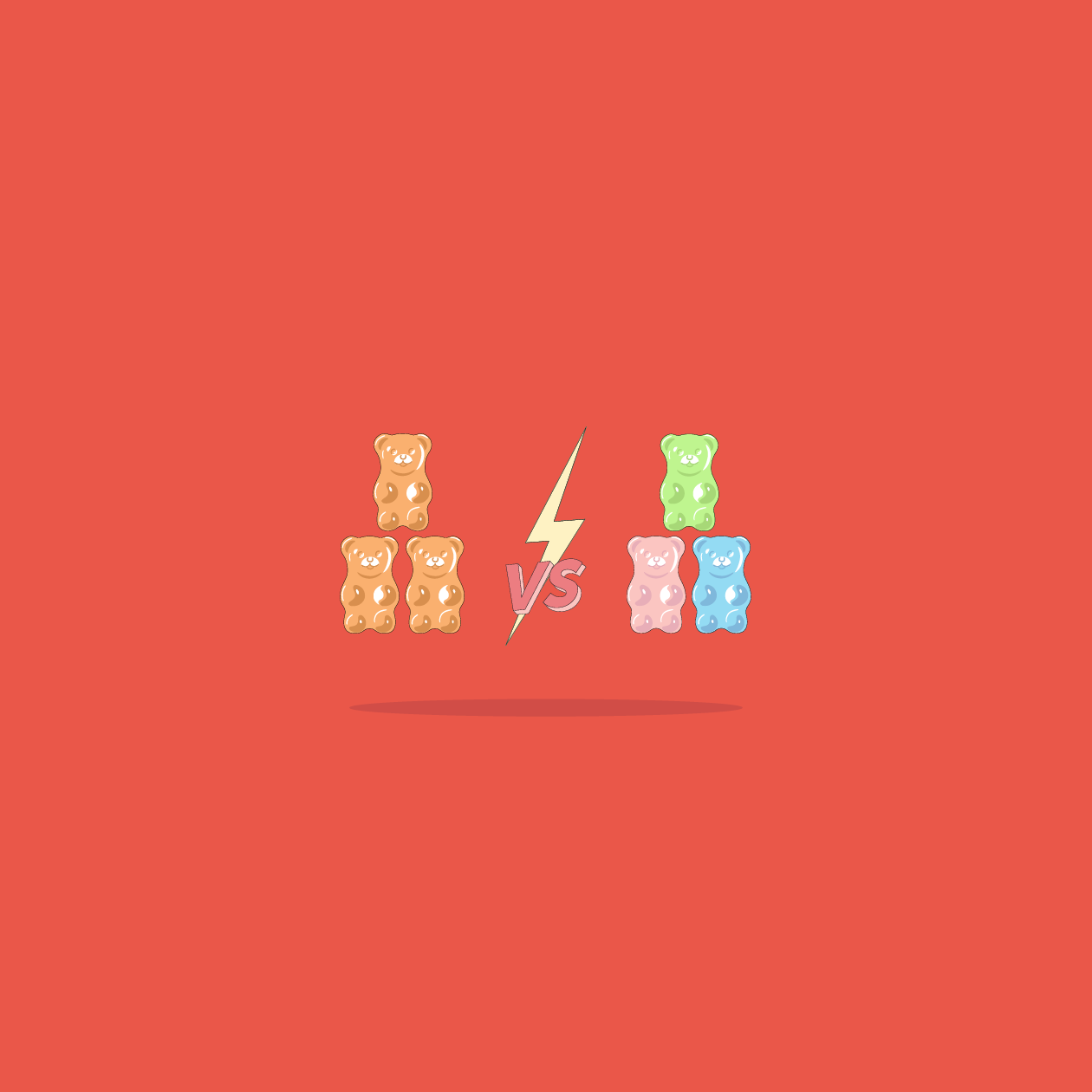Our websites use cookies. By continuing, we assume your permission to deploy cookies as detailed in our Privacy Policy.
Get Personal or Get Lost: The Unbeatable Advantage of Personalisation
Knowing your customers’ favourite snack or drink can be the difference between them clicking “buy” or “bye-bye.”
Personalisation is a vital ingredient to success in the world of eCommerce. By understanding your customers’ preferences, you can tailor your offerings to meet their needs and create a positive shopping experience that keeps them coming back for more. Whether it’s their favourite snack, drink, or even the colours they prefer to wear, taking the time to personalise the experience can be the key to building strong customer relationships and driving sales growth.
So, buckle up and get ready to slay the eCommerce game with personalisation!
Key Takeaways
- eCommerce personalisation is the display of dynamic content based on unique information about a customer, such as demographics, browsing history, past purchases, and browsing device to tailor the shopping experience.
- This strategy offers several benefits, such as improving the customer experience, increasing sales and conversion rates, and encouraging repeat purchases.
- However, eCommerce personalisation also has some challenges, including data privacy concerns, adapting to zero-party and first-party data, and data collection and implementation.
- To overcome these challenges, companies must invest in appropriate data management tools and staff and be transparent about their data collection practices to build customer trust.
What is eCommerce Personalisation?
A personalised eCommerce experience is one where an online store displays dynamic content based on the unique information about a customer. A user’s demographics, browsing history, past purchases, and browsing device can all contribute to eCommerce personalisation.
Or, in BigCommerce’s words,
“eCommerce personalisation lets you treat each customer like a VIP.”
3 Benefits of eCommerce Personalisation
Considering that customers today have hundreds of options to shop from, eCommerce personalisation can make the difference between customer retention and abandonment. Let’s take a look closer look at why personalisation is important:
1. Improved Customer Experience
Personalised product or content recommendations, promotions and offers help customers narrow down their choices, saving them from decision exhaustion. To illustrate, nearly 40% of customers leave a website because they are overwhelmed by too many options.
It is imperative that websites provide personalised experiences if they offer different products that appeal to different demographics.
Personalise; Don’t Annoy: Download the Winning Guide to Product Recommendations
2. Increased Sales and Conversion Rates
The more personalised your online store is, the higher the likelihood of a sale. That’s because customers are able to cut through the clutter and find exactly what they want, making the purchase more likely.
For example, a personalised homepage has a lower bounce rate because the content is curated according to the shopper’s behavioural pattern, such as browsing and purchasing history.
3. Greater Customer Lifetime Value
eCommerce personalisation allows marketers to adapt continuously to ever-changing customer needs and do so at a scale. Personalisation also encourages repeat purchases by keeping customers constantly in the loop, leading them from awareness to action.
eCommerce Personalisation Statistics
- 70% of consumers say a company’s ability to understand their individual needs influences their loyalty.
- Personalised recommendations increase the likelihood of a purchase by 75%.
- 58% of cosmetics & beauty customers would prefer to purchase from a brand providing personalised quizzes or experiences.
- 78% of consumers are more likely to repeat purchases from brands that provide personalisation.
- Companies can generate up to 40% more revenue with personalised marketing actions.
Challenges with eCommerce Personalisation
Data Privacy Concerns
Third-party data, the data that’s not directly collected from the individual, used to be a massive help with data collection, eCommerce personalisation and retargeting.
In time, however, the public started declaring their concerns over data privacy louder and louder, which led to regulations and laws like GDPR (General Data Protection Regulation) and CCPA (California Consumer Privacy Act) being enacted to ensure that data tracking is done with the individual’s consent.
For more information, read Cookieless Future: A New Age for Digital Marketing
Interpreting the signals from consumers and lawmakers as a sign to change their ways, companies like Google and Apple started stopping cross-app data sharing and eliminating third-party cookies altogether.
Adapting to Zero-Party & First-Party Data
The term zero-party data refers to data that your company receives directly from your customers, such as purchase intentions, personal content, how an individual wants to be contacted by a brand, etc.
First-party data is the information a company collects directly through its own channels and sources like mobile apps, websites, social media, SMS, email, and more.
The good thing about zero-party is that it’s accurate most of the time since it’s explicitly provided by the customers. And the good thing about first-party data is that the website in question is the only entity with that information—it’s unique.
Why are these considered a challenge then?
As mentioned, companies got pretty used to working with third-party data; they’re sort of out of shape in dealing with zero-party or first-party data. So they will need time and practice in collecting and using these.
Another angle to consider here is transparency and trust-building. With zero-party data, customers are directly sharing their personal information, which they’re already concerned about to begin with. Hence, companies must learn to be transparent about their data collection practices and use them ethically to build customer trust.
Data Collection & Implementation
Additionally, collecting and managing zero-party and first-party data can be complex and time-consuming, requiring specialised skills and technology. Companies must invest in appropriate data management tools and staff to collect, store and analyse the data effectively.
A Customer Engagement Platform like Segmentify would be the best partner for this task!
Top-tier brands such as Puma, Ebuyer, Intersports, Celtic, Samsung, Carrefour, Mediamarkt, and IKEA opt to collaborate with Segmentify as our solutions allow them to tailor and adapt on-site and cross-channel marketing campaigns.
Our technology allows websites to identify and interact with individual visitors in real-time and on a large scale, which enables them to provide the most suitable experience and modify their journeys based on changes in behavioural data.
Integrating Segmentify with any website is a quick and straightforward process that only requires adding two lines of JS code — no IT team is necessary. The Segmentify Success Team handles the setup of widgets and performs the essential tests. As a result, your campaigns can be up and running within days!
Data Quality
Personalisation relies heavily on data accuracy and completeness to deliver tailored experiences that meet customers’ preferences and needs. Bad data can refer to any inaccurate, incomplete, or irrelevant information about customers, products, or operations that can negatively impact a business’s ability to make informed decisions or deliver high-quality service.
A business with inaccurate or incomplete customer data may struggle to create personalised product recommendations, targeted marketing campaigns and customised shopping experiences.
For example, if a customer’s purchase history is incomplete or inaccurate, a business may struggle to provide recommendations relevant to their interests. Similarly, if a customer’s shipping address is incorrect, their order may not be delivered, resulting in a negative customer experience.
On the other hand, accurate and complete data can enable eCommerce businesses to provide highly personalised experiences that increase customer loyalty, satisfaction, and sales. By ensuring that customer data is accurate and up-to-date, companies can create a more comprehensive understanding of their customers’ preferences and behaviours, leading to more effective personalisation strategies.
Wrapping Up
eCommerce personalisation is now a widely accepted practice in the industry and is essential for any business aiming to attract and retain customers and stay ahead of the competition. The personalisation process begins with gathering customer data, identifying key customer segments, analysing this data to comprehend the intent of each segment, and delivering personalised journeys for each one.
FAQs About eCommerce Personalisation
What is eCommerce personalisation?
eCommerce personalisation is the practice of tailoring the online shopping experience for individual customers based on their preferences, behaviour, and other relevant data.
Why is eCommerce personalisation important?
Personalisation can help improve customer satisfaction, increase customer loyalty, and ultimately drive sales and revenue growth for eCommerce businesses.
What kind of data is needed for eCommerce personalisation?
eCommerce businesses typically collect data such as customer demographics, purchase history, browsing behaviour, and other relevant metrics to help personalise the shopping experience.
How can eCommerce personalisation be implemented?
eCommerce personalisation can be implemented through various techniques such as product recommendations, personalised email campaigns, customised landing pages and targeted advertising.
What are some common challenges with eCommerce personalisation?
Some common challenges with eCommerce personalisation include data privacy concerns, difficulty in collecting and analysing data, and the need to balance personalisation with customer privacy and trust.
How can eCommerce businesses measure the effectiveness of personalisation efforts?
eCommerce businesses can measure the effectiveness of personalisation efforts through metrics such as conversion rates, average order value (AOV), and customer lifetime value (LTV), among others. A/B testing and customer feedback can also be useful in evaluating personalisation efforts.
What are some best practices for eCommerce personalisation?
Some best practices for eCommerce personalisation include using data to understand customer behaviour and preferences, providing relevant and timely product recommendations, personalising email marketing campaigns, and ensuring that personalisation efforts align with customer privacy and trust concerns.
What’s the difference between personalisation and customisation?
Customers can tailor a product to their preferences through customisation, including changes to colour, size, and other features. On the other hand, personalisation involves an algorithm that identifies the customer’s search intent, browsing behaviour and demographic information (such as age, location, and income) to curate a digital experience specific to their needs.





